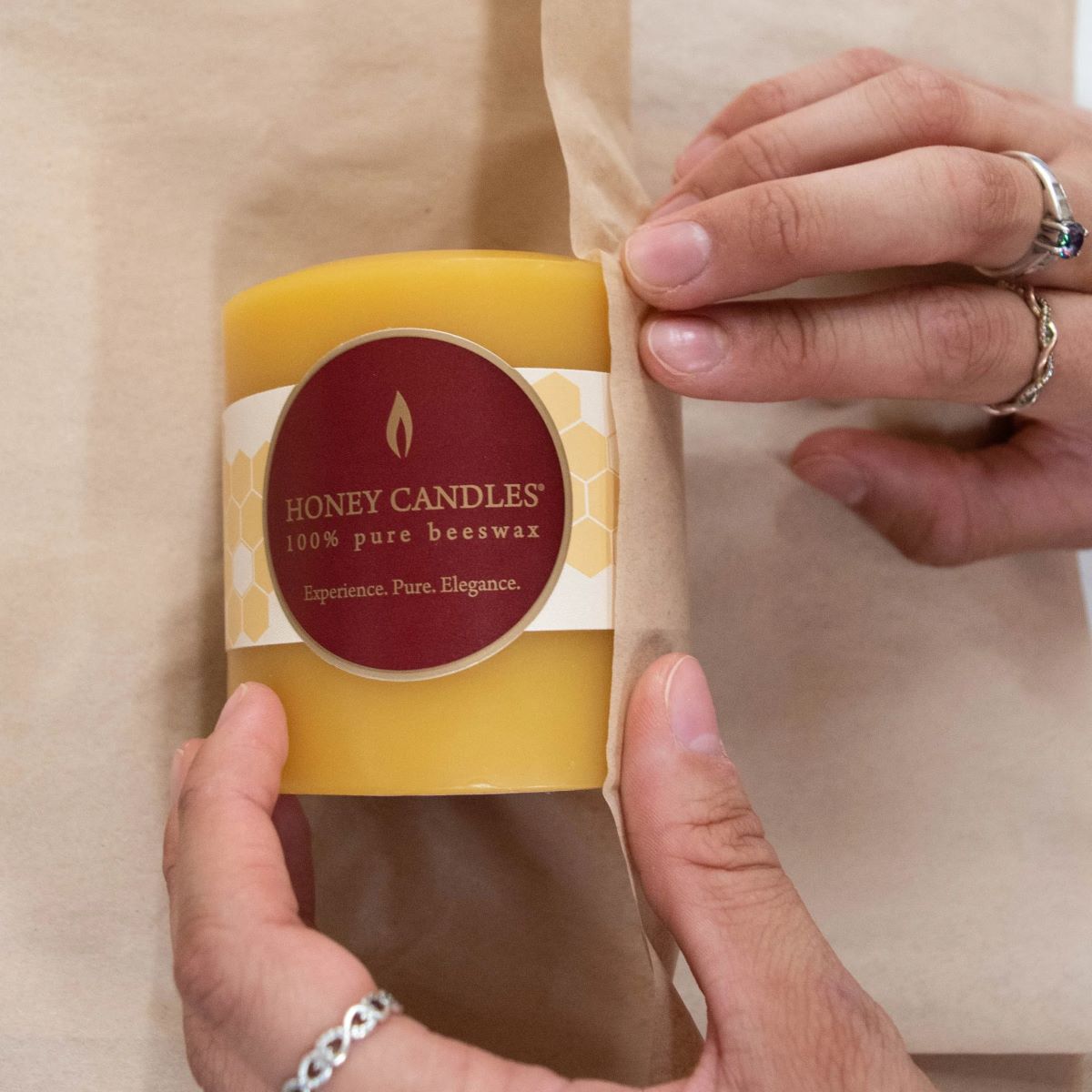

Articles
How To Store Beeswax
Modified: December 7, 2023
Learn how to store beeswax effectively with our informative articles. Discover the best methods for preserving the quality and longevity of your beeswax products.
(Many of the links in this article redirect to a specific reviewed product. Your purchase of these products through affiliate links helps to generate commission for Storables.com, at no extra cost. Learn more)
Introduction
Beeswax is a versatile natural substance that has been used for centuries in various applications. From candle making and skincare products to woodworking and crafts, beeswax is prized for its unique properties and beneficial qualities. If you work with beeswax or have a surplus on hand, proper storage is essential to maintain its quality and usability over time. In this article, we will explore the importance of storing beeswax correctly and provide tips on how to ensure its longevity.
Why Store Beeswax?
Beeswax, being a natural material, can be affected by external factors such as heat, light, moisture, and contaminants. Proper storage helps to minimize these effects and extends the shelf life of beeswax. When stored correctly, beeswax can retain its fragrance, color, and texture, making it easier to work with in different applications. Additionally, storing beeswax properly ensures that it remains free from impurities and maintains its natural properties.
Key Takeaways:
- Proper storage of beeswax is crucial to maintain its quality, fragrance, and usability. Choosing the right container, preparing beeswax, and maintaining ideal storage conditions are key to preserving this versatile natural substance.
- Regular inspection and maintenance of stored beeswax help detect and address any issues early, ensuring its quality and usability. Proper labeling and organization also contribute to an efficient and accessible storage system for beeswax.
Read more: How To Naturally Color Beeswax Candles
Choosing the Right Container
When it comes to storing beeswax, choosing the right container is crucial. It is best to use containers that are made of materials such as glass, metal, or food-grade plastic that are resistant to heat and moisture. Avoid using containers made of materials that can react with or leach harmful chemicals into the beeswax.
Ensure that the container has a tight-sealing lid or closure to prevent air, moisture, and contaminants from entering. Airtight containers help maintain the integrity of the beeswax and prevent it from drying out or absorbing unwanted odors. It’s also a good idea to choose containers that are of appropriate size to prevent excessive air space, as this can lead to degradation of the beeswax.
Preparing Beeswax for Storage
Prior to storing beeswax, it’s important to prepare it properly to ensure optimal storage conditions. Start by cleaning any debris or impurities from the beeswax. You can gently scrape off any dirt or leftover honey using a soft brush or cloth. If necessary, you can also wash the beeswax with mild soap and warm water, ensuring thorough drying before storage.
If the beeswax is in its raw form, it may have bits of comb or other natural debris. In such cases, you can consider filtering or straining the melted beeswax using a fine mesh sieve or cheesecloth to remove any solids and achieve a cleaner product for storage.
Ideal Storage Conditions
Beeswax is sensitive to temperature and humidity, so it’s crucial to store it in optimal conditions to prevent degradation or spoilage. The ideal temperature range for storing beeswax is between 60°F to 75°F (15°C to 24°C), with a humidity level between 40% to 60%. Extreme temperatures and high humidity can cause the beeswax to melt or become brittle over time.
Avoid exposing beeswax to direct sunlight or strong UV light, as it can cause discoloration and degradation of the wax. Keep the storage area clean and free from any strong odors or chemicals that can be absorbed by the beeswax.
Stay tuned for the next section on storing beeswax in blocks.
Why Store Beeswax?
Beeswax is a natural product that is derived from the honeycomb of bees. It is known for its unique qualities, including its natural fragrance, beautiful color, and malleability. Beeswax has been traditionally used for various purposes, from crafting and candle making to skincare and medicinal applications. Given its versatility and value, it’s important to store beeswax properly to maintain its quality and usability.
One of the main reasons to store beeswax is to preserve its fragrance. Beeswax has a natural, sweet scent that adds a pleasant aroma to any environment. However, over time, beeswax can absorb odors from its surroundings. By storing beeswax in airtight containers, away from strong-smelling substances, you can prevent it from losing its delightful fragrance.
Proper storage of beeswax also helps to maintain its color. Beeswax comes in various hues, ranging from pale yellow to darker shades of brown. Exposure to light and air can cause beeswax to fade or become discolored. By storing beeswax in opaque containers and in a dark, cool place, you can preserve its natural color for an extended period.
In addition to fragrance and color, preserving the texture of beeswax is another important reason for proper storage. Beeswax is naturally soft and pliable, making it easy to work with and mold into various shapes. However, fluctuations in temperature can affect its consistency. By storing beeswax at a stable temperature, you can prevent it from becoming too soft or brittle, ensuring that it remains in an optimal state for use.
Storing beeswax correctly is also crucial for maintaining its purity and preventing contamination. Beeswax is a natural product, and it can attract dust, dirt, and other impurities if not stored properly. By keeping beeswax in clean, sealed containers, you can protect it from external contaminants, ensuring that it remains pure and ready for use in your desired application.
Furthermore, beeswax has a long shelf life when stored correctly. Its natural properties help to preserve its quality over time. By keeping beeswax in optimal storage conditions, you can ensure that it remains usable for a long period, saving you from the need to frequently replace or discard beeswax that has deteriorated.
Overall, storing beeswax correctly is essential for preserving its fragrance, color, texture, purity, and longevity. By following proper storage techniques, you can ensure that your beeswax remains in its best condition and ready to be utilized in the various creative and practical applications it is known for.
Next, let’s explore the different container options for storing beeswax.
Key Takeaways:
- Proper storage of beeswax is crucial to maintain its quality, fragrance, and usability. Choosing the right container, preparing beeswax, and maintaining ideal storage conditions are key to preserving this versatile natural substance.
- Regular inspection and maintenance of stored beeswax help detect and address any issues early, ensuring its quality and usability. Proper labeling and organization also contribute to an efficient and accessible storage system for beeswax.
Read more: How To Naturally Color Beeswax Candles
Choosing the Right Container
When it comes to storing beeswax, choosing the right container is of utmost importance. The right container will protect the beeswax from external factors and ensure its longevity. Here are some considerations to keep in mind when selecting a container for storing beeswax.
Material: It is recommended to use containers made of glass, metal, or food-grade plastic for storing beeswax. These materials are durable, heat-resistant, and do not react with the beeswax. Avoid using containers made of materials that can leach harmful chemicals into the beeswax. It is crucial to ensure that the container is non-reactive and does not compromise the quality of the beeswax.
Sealing: Look for containers that have a tight-sealing lid or closure. Beeswax is sensitive to air exposure, which can lead to oxidation and degradation over time. Airtight containers prevent air from entering and keep the beeswax fresh for longer periods. The lid or closure should create a secure seal to prevent any moisture or contaminants from getting inside the container.
Size: Consider the size of the container based on the amount of beeswax you need to store. It is recommended to choose a container that comfortably accommodates the beeswax without leaving excessive air space. More air space can increase the chances of oxidation and moisture absorption. However, leaving some headspace is necessary to allow for potential expansion if the beeswax melts and solidifies.
Transparency: While it is essential to protect beeswax from light exposure, transparency or opacity of the container depends on personal preference. If you prefer to see the beeswax inside the container, choose a transparent or translucent container made of UV-resistant material. Alternatively, opt for opaque containers that block light entirely and provide better protection against UV radiation.
Consider the Usage: Think about how you plan to use the beeswax when selecting the container. If you frequently use small amounts, consider using smaller jars or containers with wide openings for easy access. On the other hand, if you need to store a larger quantity for commercial purposes, larger jars, or food-grade buckets with lids might be more suitable.
Labeling: Once you have chosen the right container, it’s important to label it properly. Clearly mark the container with the type and grade of the beeswax, as well as the date of storage. This will help you keep track of the beeswax, especially if you have different grades or batches stored.
By selecting the right container for storing beeswax, you can ensure that it remains protected, preserved, and ready to be used in various applications. In the next section, we will discuss the preparation of beeswax for storage.
Preparing Beeswax for Storage
Before storing beeswax, it is important to prepare it properly to ensure its optimal condition during storage. Proper preparation helps to remove any impurities and ensure that the beeswax is clean and ready for later use. Here are some steps to follow when preparing beeswax for storage.
1. Cleaning: Start by cleaning any debris or foreign particles from the beeswax. Gently scrape off any dirt or leftover honey using a soft brush or cloth. Be careful not to overly agitate the beeswax, as excessive handling can cause it to melt or deform. Cleaning the beeswax helps to remove any surface impurities and ensures a cleaner final product.
2. Washing (if necessary): In some cases, the beeswax may still have bits of comb or other natural debris attached to it. If needed, you can consider washing the beeswax to further remove impurities. Fill a basin or sink with lukewarm water and add a mild soap suitable for beeswax. Immerse the beeswax in the soapy water, gently agitate it, and let it soak for a short period. Rinse the beeswax thoroughly with clean water to remove any soap residue.
3. Drying: After cleaning or washing, it is crucial to ensure that the beeswax is completely dry before storing it. Allow the beeswax to air dry in a clean and well-ventilated area. Alternatively, you can use a soft towel or cloth to gently pat dry the beeswax. Make sure there is no moisture remaining on the surface or in any crevices of the beeswax, as this can lead to mold growth or degradation during storage.
4. Filtering or Straining (if necessary): If the beeswax is in its raw form and still contains solid particles like bits of comb or other debris, you may want to consider filtering or straining it before storage. Melt the beeswax in a double boiler or a dedicated beeswax melting pot over low heat. Once fully melted, pour the liquid wax through a fine mesh sieve or cheesecloth into a clean container. This helps to remove any remaining particles and achieve a purer beeswax for storage.
After preparing the beeswax, make sure to handle it with clean hands or gloves to avoid transferring any contaminants to the wax. Properly prepared beeswax is now clean, free from impurities, and ready to be stored.
In the next section, we will discuss the ideal storage conditions for beeswax to ensure its longevity.
Ideal Storage Conditions
To maintain the quality and longevity of beeswax, it is crucial to store it in ideal conditions. Proper storage conditions help to prevent degradation, maintain the properties of the beeswax, and ensure its usability over time. Here are some factors to consider when storing beeswax:
1. Temperature: Beeswax is sensitive to temperature fluctuations. It is best to store it in a cool and dry environment with a temperature range between 60°F to 75°F (15°C to 24°C). Avoid exposing beeswax to extreme heat or cold, as it can lead to melting or brittleness. The stability of temperature helps to preserve the texture and consistency of the beeswax.
2. Humidity: Beeswax is also sensitive to humidity levels. The ideal humidity range for storing beeswax is between 40% to 60%. Too much moisture in the air can cause the beeswax to absorb moisture, leading to softening or mold growth. On the other hand, extremely dry conditions can result in the beeswax becoming brittle. A moderate level of humidity helps to maintain the proper moisture balance in the beeswax.
3. Light Exposure: Beeswax is photosensitive and can fade or change color when exposed to direct sunlight or strong UV light. It is essential to store it in a dark or dimly lit area to protect it from light exposure. If possible, choose opaque containers that block out light entirely. If transparency is desired, consider using containers made of UV-resistant material or storing the beeswax in a dark cupboard or drawer.
4. Odor Control: Beeswax can absorb odors from its surroundings, which can affect its natural fragrance. To prevent the beeswax from picking up unwanted odors, store it away from strong-smelling substances such as chemicals, cleaning agents, or perfumes. Keeping the storage area clean and free from strong odors helps to preserve the original scent of the beeswax.
5. Air Circulation: While airtight containers are recommended, it is still important to allow some airflow to prevent the accumulation of moisture. Ensure that the storage area has adequate ventilation to avoid any buildup of stagnant air. This helps to maintain a balanced environment and prevent the growth of mold or mildew.
By adhering to these ideal storage conditions, you can prolong the shelf life of beeswax, maintain its quality, and ensure that it remains in optimal condition for future use. Next, we will explore different methods for storing beeswax, starting with storing it in blocks.
Store beeswax in a cool, dry place away from direct sunlight to prevent it from melting or becoming discolored. Airtight containers or resealable bags can help maintain its quality.
Storing Beeswax in Blocks
Storing beeswax in blocks is a popular method that allows for easy handling and measurement when using the wax in various applications. Here are some tips for storing beeswax in blocks:
1. Cut into Suitable Sizes: If you have a large block of beeswax, consider cutting it into smaller, more manageable sizes. This allows for easier handling and ensures that you can use only the amount needed without exposing the entire block to potential contaminants or moisture.
2. Wrap in Wax Paper or Parchment: To protect the beeswax blocks, wrap each individual piece in wax paper or parchment paper. This prevents the blocks from sticking together and helps maintain their shape. It also provides an additional layer of protection against light and air exposure.
3. Place in Airtight Container: Once the beeswax blocks are wrapped, place them in an airtight container. Glass or metal containers with a tight-fitting lid work well for this purpose. Ensure that the container is clean and free from contaminants that could affect the beeswax.
4. Store in a Cool, Dark Place: Find a cool and dark storage area to keep the container of beeswax blocks. A pantry or cupboard away from direct sunlight and heat sources is ideal. Make sure the area is well-ventilated to prevent the build-up of moisture.
5. Label and Date: Don’t forget to label the container with the type and grade of the beeswax, as well as the date it was stored. This helps you keep track of the beeswax’s age and usage when selecting blocks for specific projects.
By following these steps, you can store beeswax in blocks effectively, ensuring its quality and usability over an extended period. Next, we will explore another storage option: storing beeswax in pellets.
Read more: How To Make Rolled Beeswax Candles
Storing Beeswax in Pellets
Storing beeswax in pellet form is a convenient option for those who prefer ready-to-use wax or require precise measurements in their projects. Here are some tips for storing beeswax in pellets:
1. Choose High-Quality Pellets: Select high-quality beeswax pellets that are clean and free from impurities. Look for pellets that are uniform in size and color, indicating a consistent quality of the beeswax.
2. Use Resealable Bags or Containers: Transfer the beeswax pellets into resealable bags or airtight containers. This helps to keep the pellets fresh, protected from air exposure, and prevents moisture from reaching the beeswax. Ensure you use food-grade bags or containers that are approved for storing edible products.
3. Remove Excess Air: Squeeze out any excess air from the bags or containers before sealing them. This reduces the chances of oxidation and helps to maintain the freshness of the beeswax pellets. Alternatively, you can use a vacuum sealer to remove air completely from the packaging.
4. Store in a Cool, Dry Place: Find a cool and dry location to store the bags or containers of beeswax pellets. It is important to avoid exposure to direct sunlight or heat sources, as they can cause melting or degradation of the wax. A pantry or cupboard away from moisture is an ideal storage spot.
5. Label and Date: Label each bag or container with the type and grade of the beeswax pellets, as well as the date of storage. This will help you keep track of the beeswax’s age and usage, ensuring that you use the oldest pellets first.
By following these tips, you can store beeswax pellets effectively, preserving their quality and ensuring convenient access when needed. Next, let’s explore another storage option: storing beeswax in sheets or wraps.
Storing Beeswax in Sheets or Wraps
Storing beeswax in sheets or wraps is a versatile option that allows for easy handling and preservation of the beeswax’s shape. Here are some tips for storing beeswax in sheets or wraps:
1. Cut into Desired Sizes: Start by cutting the beeswax sheets into the desired sizes or shapes. This can be done using a sharp knife or scissors. Cutting the sheets to the appropriate size ensures that you have manageable portions for various projects.
2. Wrap Individually: Wrap each piece of beeswax sheet tightly in wax paper or parchment paper. This helps protect the beeswax from any external contaminants and prevents the sheets from sticking together. It also provides an extra layer of protection against light and air exposure.
3. Use a Sealable Bag or Container: Place the wrapped beeswax sheets in a sealable bag or airtight container. Ensure that the container is clean and has a tight-fitting lid to prevent moisture from entering and air from reaching the beeswax. Using a clear container allows you to easily see and access the beeswax sheets.
4. Store in a Cool, Dark Place: Find a cool, dark area to store the bag or container of beeswax sheets. This could be a pantry or cupboard away from direct sunlight and heat sources. Storing the sheets in a cool environment helps to maintain their shape and integrity.
5. Label and Date: It’s important to label the bag or container with the type of beeswax sheets, the date of storage, and any other relevant information. This allows for easy identification and helps you track the age of the beeswax sheets for future use.
By following these steps, you can store beeswax sheets or wraps effectively, preserving their shape, protecting them from contaminants, and extending their shelf life. Next, let’s explore another storage option: storing beeswax in granules.
Storing Beeswax in Granules
Storing beeswax in granule form is a convenient option for those who require easily-measured portions or prefer the versatility of granulated wax. Here are some tips for storing beeswax in granules:
1. Use Resealable Bags or Containers: Transfer the beeswax granules into resealable bags or airtight containers. This helps to keep the granules fresh, protected from air exposure, and prevents moisture from reaching the beeswax. Ensure you use food-grade bags or containers that are approved for storing edible products.
2. Remove Excess Air: Squeeze out any excess air from the bags or containers before sealing them. This reduces the chances of oxidation and helps to maintain the freshness of the beeswax granules. Alternatively, you can use a vacuum sealer to remove air completely from the packaging.
3. Label and Date: Label each bag or container with the type and grade of the beeswax granules, as well as the date of storage. This will help you keep track of the beeswax’s age and ensure that you use the oldest granules first to maintain freshness.
4. Store in a Cool, Dry Place: Find a cool and dry location to store the bags or containers of beeswax granules. It is important to protect the granules from exposure to direct sunlight or heat sources, as they can cause melting or deterioration of the wax. A pantry or cupboard away from moisture is an ideal storage spot.
5. Consider Portioning: If you frequently use specific amounts of beeswax granules, consider portioning them in smaller, individual bags. This allows for easy access to the desired quantity without exposing the entire supply to potential contamination or moisture.
By following these tips, you can store beeswax granules effectively, preserving their quality and ensuring convenient access when needed. Regardless of the form in which you store your beeswax – blocks, pellets, sheets, wraps, or granules – proper storage techniques will help maintain its integrity and extend its shelf life. Next, let’s discuss the importance of proper labeling and organization in bee wax storage.
Proper Labeling and Organization
Proper labeling and organization are essential when it comes to storing beeswax. Clear labeling and systematic organization ensure that you can easily identify and access the beeswax when needed. Here are some tips for proper labeling and organization:
1. Label Each Container: Whether you’re storing beeswax in blocks, pellets, sheets, wraps, or granules, it’s important to label each container. Clearly mark the type and grade of the beeswax, as well as the date of storage. This information helps to differentiate between different batches or grades of beeswax and prevents confusion when selecting the appropriate wax for specific projects.
2. Consider Color Coding: If you have various types or grades of beeswax, consider using a color coding system to easily identify and differentiate between them. For example, you can use colored labels or stickers on the containers or use different colored containers for each type of beeswax. This visual cue makes it quick and easy to locate the right beeswax for your needs.
3. Arrange in an Orderly Manner: Organize the containers of beeswax in a systematic manner. You can arrange them alphabetically by type or grade, or categorize them based on their intended use or application. This organization system will help you locate the desired beeswax without having to rummage through containers or waste time searching for a specific type of wax.
4. Separate Different Forms: If you store beeswax in different forms, such as blocks, pellets, sheets, and granules, consider keeping them separate. This separation helps to maintain the integrity and shape of each type of beeswax and prevents cross-contamination. Use different shelves or sections within a storage area to keep each form of beeswax organized.
5. Store in a Designated Area: Designate a specific area or storage cabinet for your beeswax. Keeping the wax in a dedicated space helps maintain consistency and prevents mixing with other items. If possible, store beeswax away from other strong-smelling substances, such as chemicals or cleaning agents, to prevent the absorption of unwanted odors.
By implementing proper labeling and organization techniques, you can ensure that your beeswax storage area remains orderly, efficient, and easily accessible. The next important step in bee wax storage is regular inspection and maintenance.
Read more: How To Make Beeswax Furniture Polish
Regular Inspection and Maintenance
Regular inspection and maintenance are vital to ensure the quality and longevity of stored beeswax. By regularly checking on your stored wax, you can identify any issues or changes early on and take appropriate measures to preserve the beeswax. Here are some tips for conducting regular inspections and maintenance:
1. Visual Inspection: Periodically inspect your stored beeswax to check for any signs of damage, discoloration, or mold growth. Look for any unusual odors or changes in texture. If you spot any issues, investigate further to determine the cause and take necessary actions to rectify the problem.
2. Temperature and Humidity Check: Monitor the temperature and humidity levels in the storage area. Use a hygrometer and thermometer to ensure that the conditions remain within the recommended range for beeswax storage. Adjust the storage environment if necessary to maintain optimal temperature and humidity.
3. Container Integrity: Check the condition of the containers holding the beeswax. Look for any cracks, leaks, or damage that could expose the beeswax to air, moisture, or external contaminants. If you notice any problems, transfer the beeswax to a new container or repair any damages to ensure continued protection and preservation.
4. Rotate Stock: If you have multiple batches or types of beeswax, periodically rotate your stock. By using older batches first, you ensure that the beeswax is used before its quality deteriorates over time. This helps to maintain freshness and prevents waste.
5. Cleaning and Reorganization: Regularly clean the storage area to remove dust, debris, or spilled wax. Wipe down the containers to keep them clean and free from any contaminants. Take the opportunity to reorganize the storage area, ensuring that the beeswax is arranged in a systematic and easily accessible manner.
6. Temperature Control: During extreme weather conditions, such as hot summers or cold winters, take extra precautions to maintain the ideal storage temperature for beeswax. Consider using insulating materials or transferring the wax to a more temperature-controlled area if necessary.
By conducting regular inspections and maintenance, you can address any potential issues early on and preserve the quality of your stored beeswax. This ensures that the wax remains in optimal condition for its intended use. Finally, let’s summarize the key points we’ve covered in this article.
Conclusion
Proper storage of beeswax is essential to maintain its quality, fragrance, color, and usability over time. By following the tips and techniques discussed in this article, you can ensure that your beeswax remains in optimal condition for various applications.
From choosing the right container and preparing beeswax for storage to maintaining ideal storage conditions and implementing proper labeling and organization, each step plays a crucial role in preserving the integrity of the beeswax.
Whether you store beeswax in blocks, pellets, sheets, wraps, or granules, the key is to protect it from air, light, moisture, and contaminants. Using airtight containers, keeping the storage area cool and dark, and avoiding exposure to strong odors are essential practices.
Regular inspections and maintenance allow you to detect any changes or issues early on, ensuring that necessary measures can be taken to preserve the quality of the stored beeswax. This includes visual inspections, monitoring temperature and humidity, checking container integrity, and cleaning and reorganizing the storage area.
By implementing these guidelines, you can ensure that your stored beeswax remains fresh, pure, and ready for use in various projects, whether it’s candle making, skincare, woodworking, or other creative endeavors.
Remember, beeswax is a remarkable natural substance with a range of applications, and by properly storing it, you can maximize its benefits and enjoy working with this versatile material for years to come.
So, take the time and effort to store your beeswax correctly, and you’ll be rewarded with beeswax that maintains its quality, fragrance, and usability, allowing you to make the most of this incredible natural gift.
Frequently Asked Questions about How To Store Beeswax
Was this page helpful?
At Storables.com, we guarantee accurate and reliable information. Our content, validated by Expert Board Contributors, is crafted following stringent Editorial Policies. We're committed to providing you with well-researched, expert-backed insights for all your informational needs.
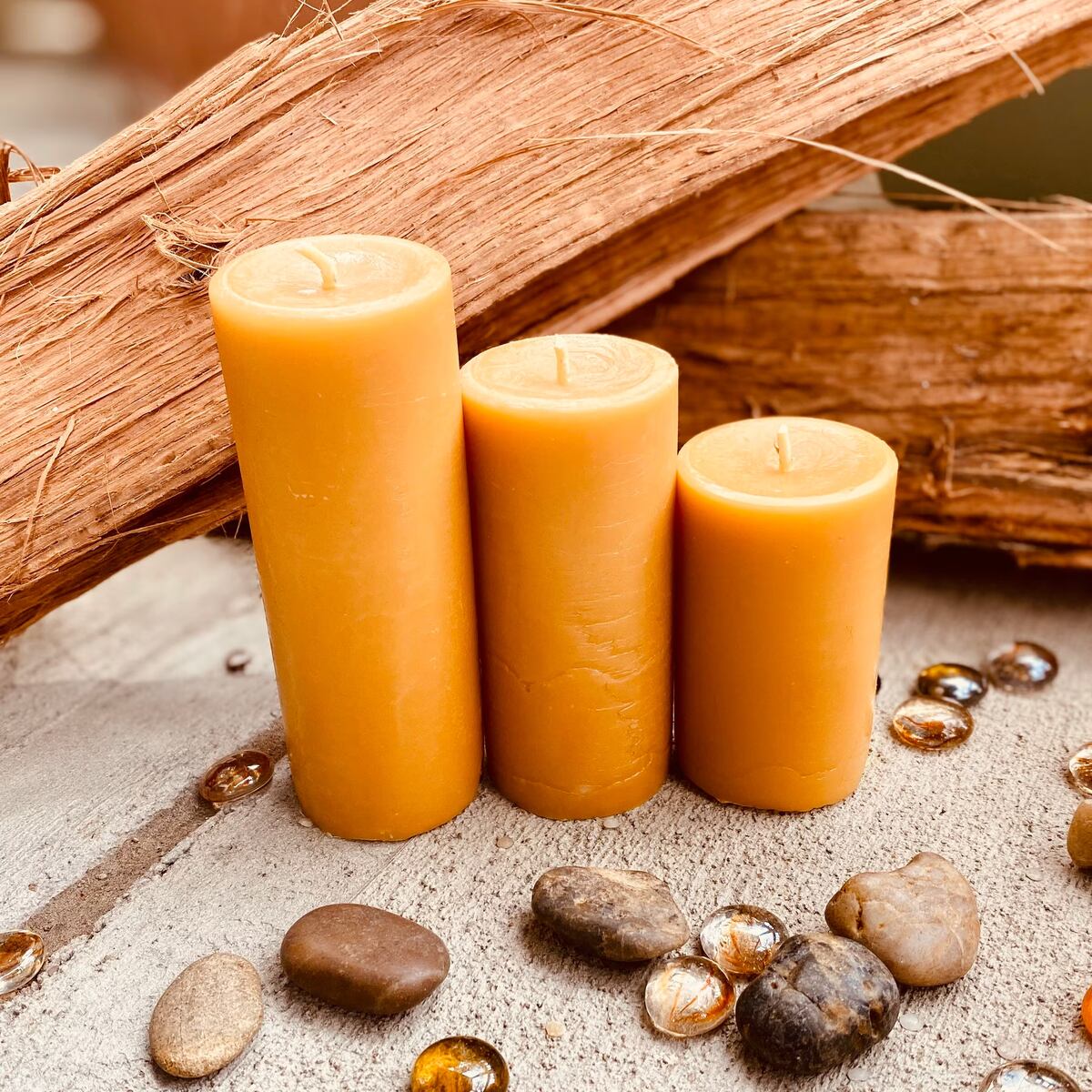

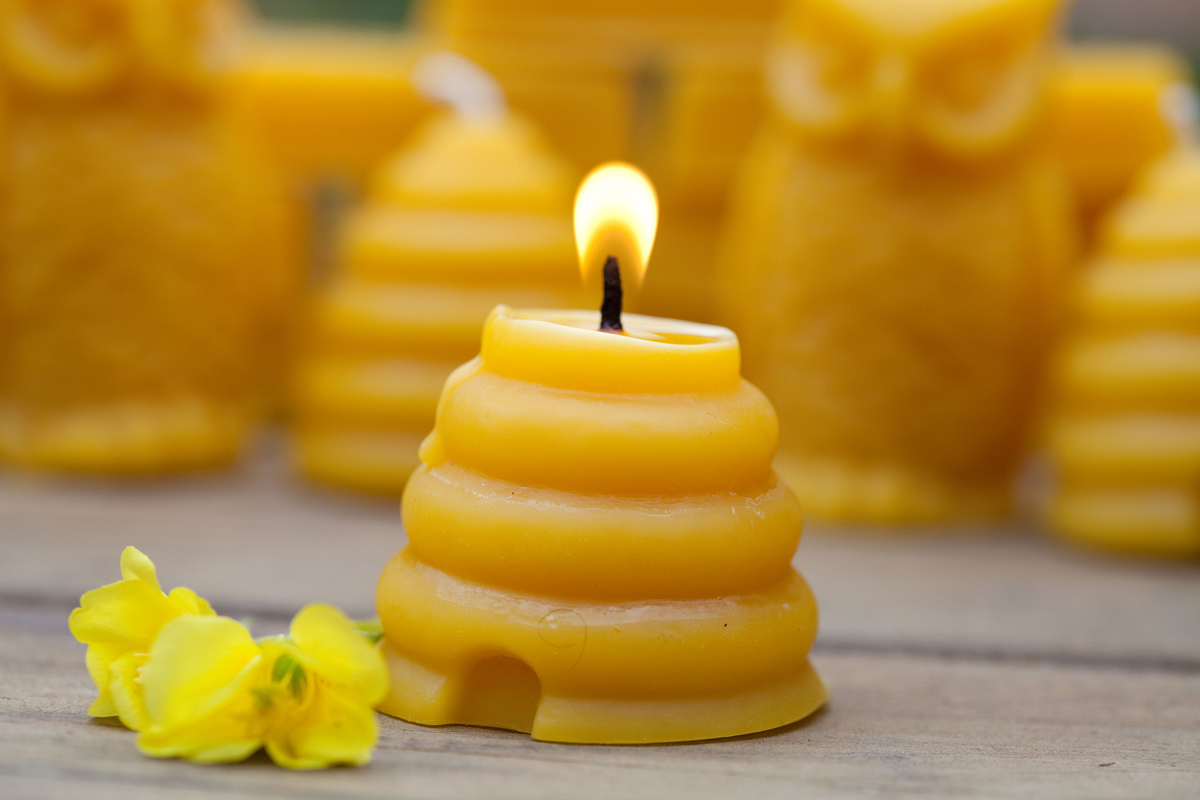
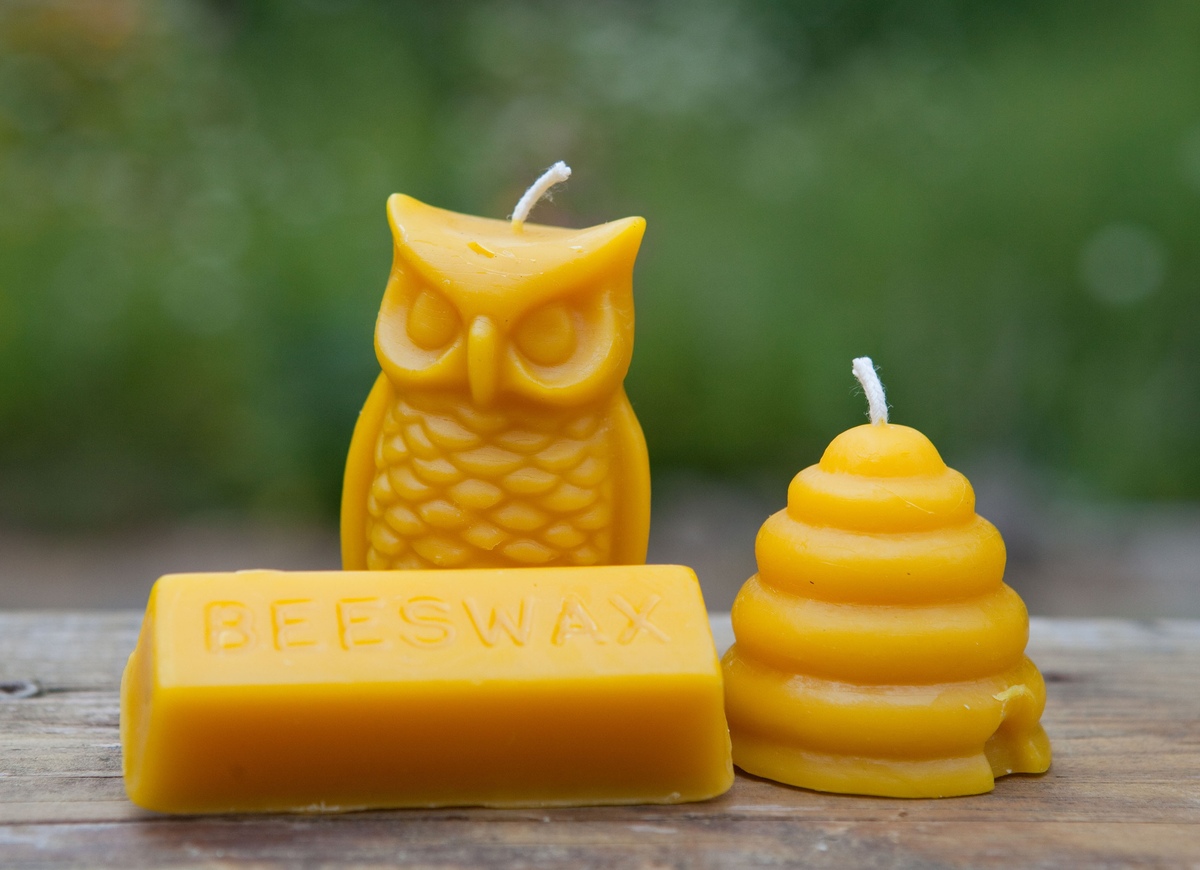




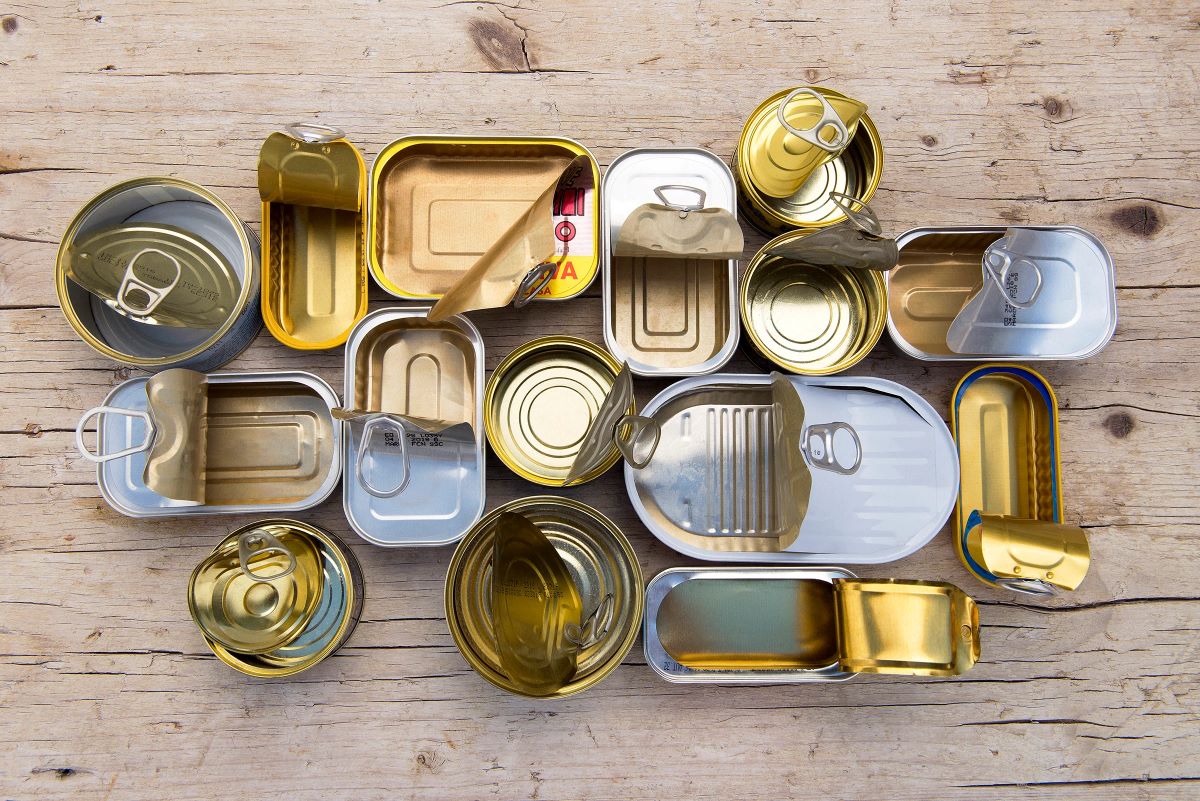




0 thoughts on “How To Store Beeswax”